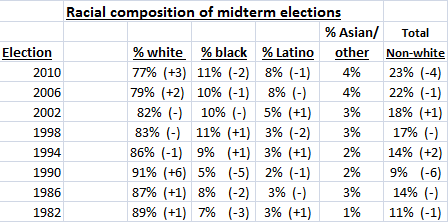 |
| President-elect George H.W. Bush greets the man he defeated by 8 points 1 month prior at his home in Dec. 1988. According to exit polls, Dukakis was just coming alive in the final days of the campaign. He defeated Bush among the 15% of voters that made up their mind in the final week by an impressive 55-43% margin. Photo courtesy of The Atlantic. |
Yesterday morning, Chris Christie took to MSNBC's 'Morning Joe' to praise the President for his handling of storm aide since Hurricane Sandy made landfall in New Jersey on October 29th. In response to a question from host Joe Scarborough, Christie replied:
"Listen, the President's kept every promise that he made. And the fact is that...that's what I was saying at the time. What I was saying at the time is I was asked about how was the President doing and I said 'he's doing a good job. He's kept his word.' And so, everybody knows that I have about 95% level of disagreement with Barack Obama on issues of principle and philosophy. But, the fact is, we have a job to do. And what people expect from people they elect is to do their job. And that's why they hate Washington so much..."
Nevermind the context of the comment. The bolded section is what received the blaring Drudge Report headline. And if anything gets remembered from this MSNBC segment during primary season 3 years from now, it won't be Christie's eloquent defense of his actions in the days following Hurricane Sandy. It will be the continued praise of a President loathed by Christie's base.
But putting aside how Republicans feel about whether or not Chris Christie actually cost Mitt Romney the Presidency in 2012, a much more basic question needs answering: did Hurricane Sandy flip the election to Barack Obama? Because if it didn't, Republicans can blame Christie for providing comfort to the enemy at most, but NOT for costing them the presidency.
The simple answer to to the above question is no; Hurricane Sandy did NOT flip the election to President Obama, at least not if you believe the exit polling. And as a result, no, Chris Christie did not cost the GOP the election in 2012. Consider the chart below:
Obama apparently won among voters that decided BEFORE the final few days of the campaign by a margin of 51-47%. But among the 9% of Americans who said they made up their mind in the final few days of the campaign, Obama's margin over Romney was even greater (50-44%).





















